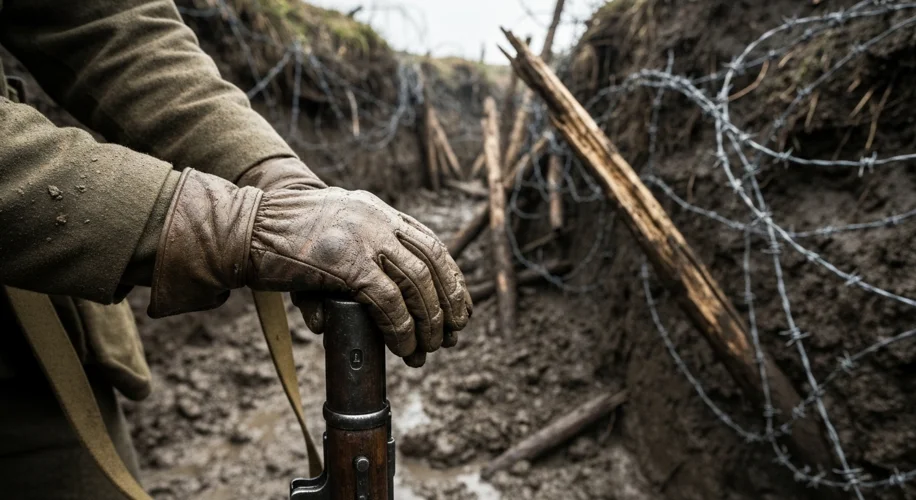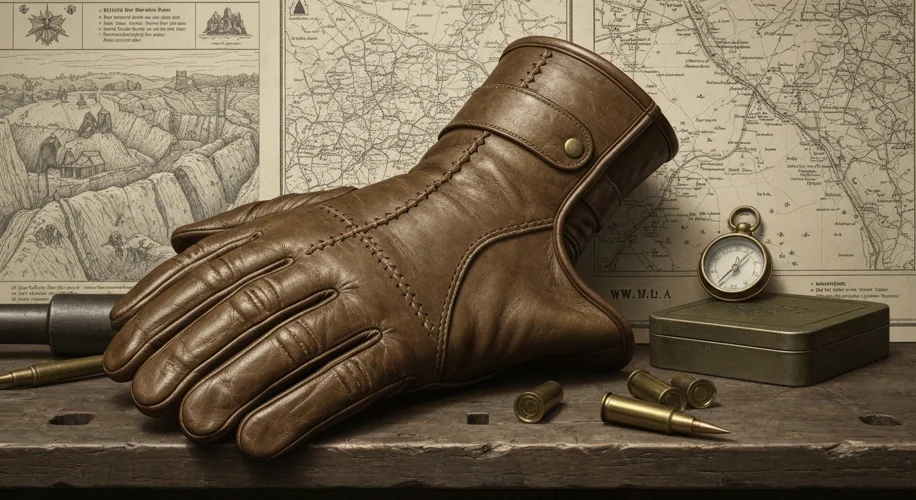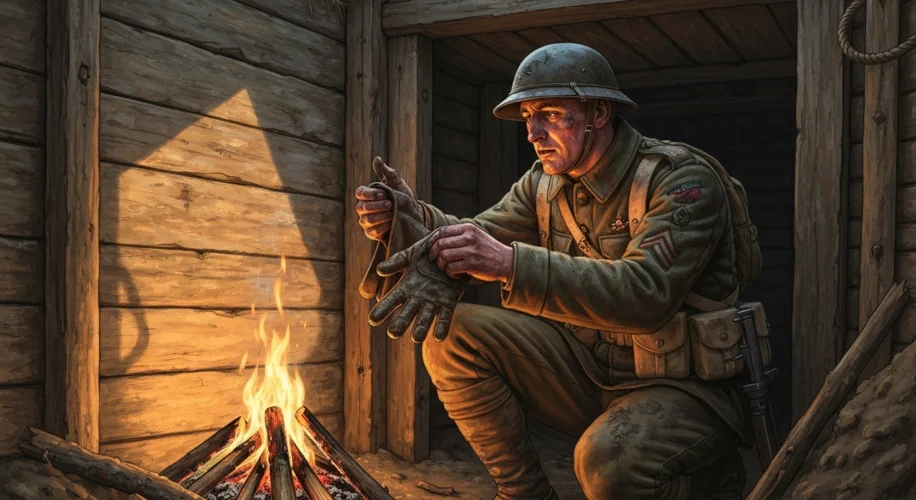The year is 1916. The air in the trenches of the Western Front is a thick, putrid stew of mud, cordite, and despair. For the British soldier, life is a brutal, unrelenting ordeal. He endures artillery bombardments that shake the very earth, the gnawing chill of damp dugouts, and the omnipresent threat of enemy fire. Amidst this hellscape, a small, often overlooked item of equipment played a vital, if often unacknowledged, role in his survival: the humble protective glove.
While grand strategies and devastating weaponry dominate the narrative of World War I, the daily realities of trench warfare demanded constant attention to the soldier’s physical well-being. The conditions were a perfect storm for debilitating injuries, particularly to the extremities. The incessant dampness of the trenches, often waterlogged to the knee, bred trench foot, a painful and incapacitating condition. Hands, constantly exposed to the elements, were equally vulnerable.

The British Army, recognizing the challenges, issued various types of gloves to its troops. The most common were sturdy leather gloves, designed to offer a measure of protection against the cold and the rough wear and tear of daily life. These were not fashion accessories; they were tools of survival. Made from materials like cowhide or sheepskin, they were intended to keep hands warm and dry, crucial for maintaining dexterity. Without functional hands, a soldier’s ability to load his rifle, operate machinery, or even eat his rations was severely compromised.
However, the reality of trench warfare often pushed these gloves to their limits. The constant immersion in water and mud meant that leather quickly became saturated, losing its insulating properties and becoming heavy and uncomfortable. Frequent contact with barbed wire, rough surfaces, and the unforgiving earth would tear and wear down the material, rendering the gloves less effective. Furthermore, the need for precise movements, especially when handling ammunition or delicate equipment, sometimes meant soldiers opted to go gloveless, a perilous choice given the conditions.
Specialized gloves also saw limited use. For soldiers involved in handling explosives or chemical agents, rudimentary forms of protective gauntlets were developed, though their effectiveness and widespread distribution are debated. Sappers and engineers, who worked extensively with demolition charges, might have received thicker, more robust gloves to protect against accidental ignition or injury during detonation.

The effectiveness of these gloves was a double-edged sword. While they offered essential protection, their maintenance was a constant challenge. Soldiers often had to dry their gloves by the meager warmth of a dugout brazier, a process that could leave them stiff and brittle. Sharing gloves was not uncommon, increasing the risk of transmitting fungal infections like trench foot to the hands. The lack of readily available replacements in the early years of the war meant that a pair of gloves could be a soldier’s sole protection for months on end, enduring constant repairs and makeshift patches.
Beyond the physical, the psychological impact of having even basic protection for one’s hands cannot be overstated. In an environment designed to strip away dignity and comfort, a pair of gloves represented a small bastion of personal provision. They were a reminder of a life beyond the trenches, a tangible link to the world where hands were used for warmth and craft, not just survival.
The story of British soldiers’ gloves in WWI is a microcosm of the broader struggle against the dehumanizing conditions of industrial warfare. It highlights the critical importance of seemingly minor equipment in the grand, brutal theatre of conflict. These weren’t the gleaming bayonets or the roar of artillery, but in the quiet, desperate moments of a soldier’s life, they were the unsung guardians of his hands, shielding them from the relentless assault of the trenches.

